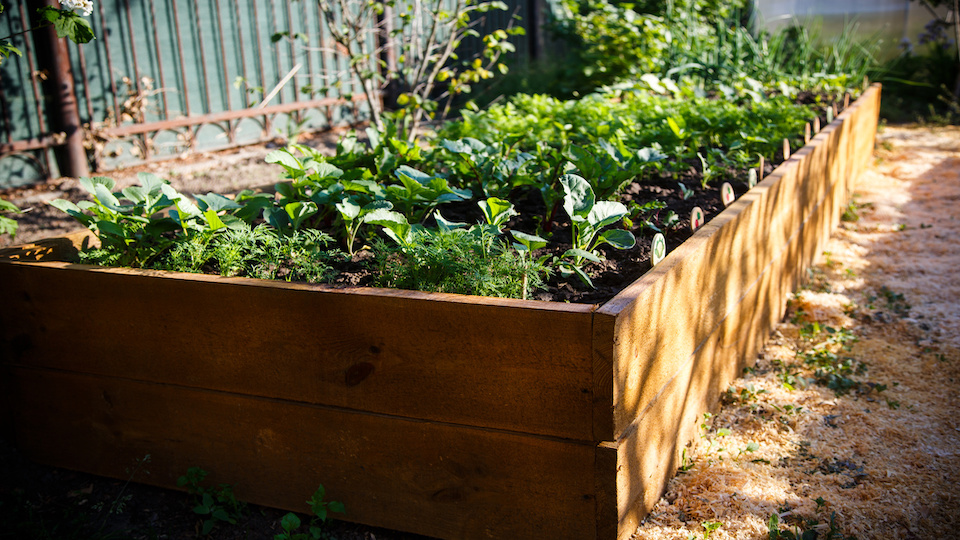Proposed by Mel Bartholomew in 1980s, Square Foot Gardening is a high yield formula for growing the maximum amount of vegetables in a limited space. Simple to design and execute, it quickly became popular with small scale home gardeners all over the world, and came to be known as SFG. Many newbie food growers first tasted success with this method and were emboldened to attempt larger projects.
Mel’s system was quite revolutionary. It did away with many of the practices and boring chores associated with traditional gardening. The typical, long row beds separated by walkways were replaced by a square grid measuring 4X4 feet.
There was no need to dig the ground since the bed itself was no longer a raised patch of soil. He made a wooden frame 6” high and filled it with a soil-free mix consisting of equal parts of compost, vermiculite, and peat moss. This mix was both lightweight and highly absorbent. To avoid weeds growing into his bed from the soil below, a weed barrier was first placed on the ground.
He divided the bed into a square foot grid with thin wooden slats nailed to the edges of the frame. Thus the space allotted for each plant or group was demarcated, making the planting scheme simple and easy to follow. While larger plants like tomatoes or eggplants got a full square, smaller ones like carrots, onions, spinach etc. went into a square in groups of 4, 9 or 16 with equal spacing. The idea was that, when all the plants reach their full size, their leaves would cover the entire surface, giving no space for weeds.
The advantages of SFG are many
Minimum effort
The bed requires no tilling as the lightweight, coarse medium resists compaction. The tightly packed planting prevents weeds from coming up, so no weeding is required. This is very reassuring for people who are gardening for the first time. This can save hours of weeding and garden care, making it possible for you to have a larger garden and grow more plants.
Easy access
The 4’X4’ dimension made the bed accessible from all four sides for ease of planting and harvesting. This avoids accidentally stepping on the bed and compacting the medium. Any pests or diseases can be easily spotted, too.
Ideal for the elderly and people with mobility issues
The bed can be prepared on a high ledge or a tabletop to avoid having to bend. It can also be reached by a wheelchair if necessary. This helps allow people who are unable to spend long periods on their knees or hunched over.
Adaptable to crop rotation and successive planting
Since all the vegetables have their designated spots on the grid, they can be replaced by new one’s post-harvest. All that’s required is the addition of fresh medium in the specific area. This will improve the organization in your garden and help you keep track of what needs to be planted in the coming season, as well as tracking the harvest.
Scalability
As the needs and confidence of the gardener increase, it’s possible to enlarge the garden by adding more beds with the same configuration or a different one. Having many small beds is much more manageable than having just a few large beds.
Saves water
Since the plants are clustered close together, they are easier to irrigate and can help save water by preventing waste. Plus, the root systems are more compact so the area to water is not as large.
Companion planting
When you choose to use a square foot gardening bed, you will usually utilize the benefits of companion planting. Planting compatible plants together in the same small area will help keep pests and insects at bay by forming a natural barrier.



